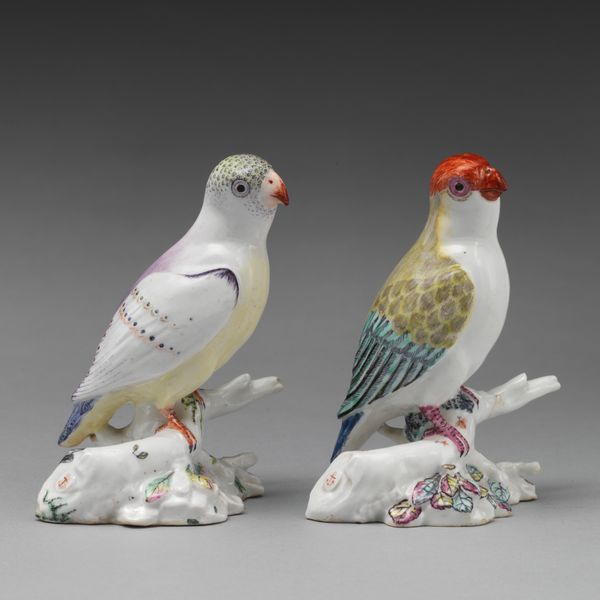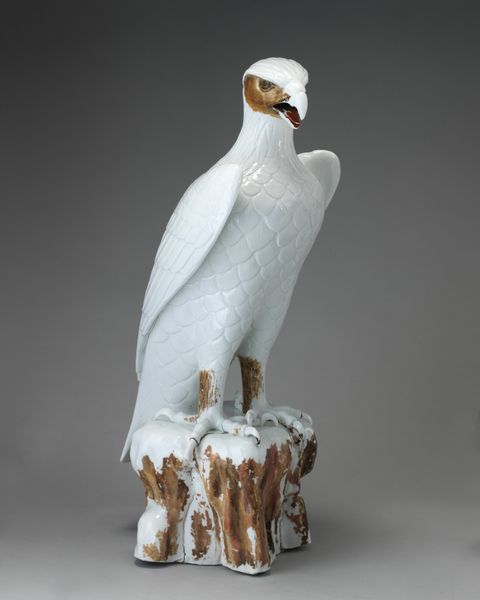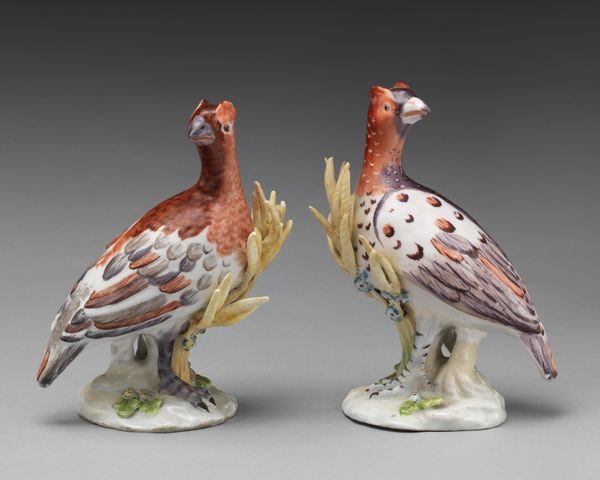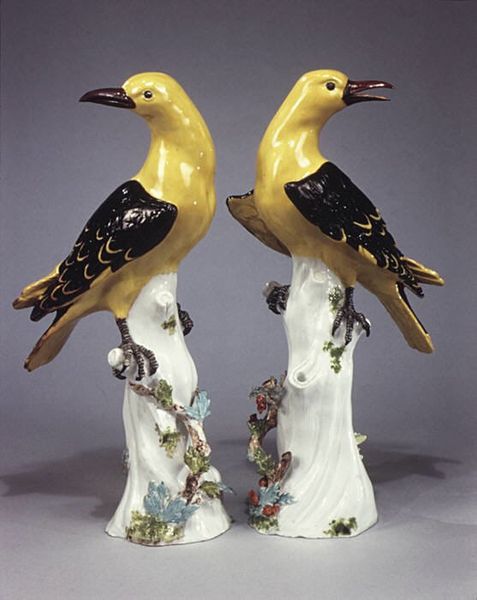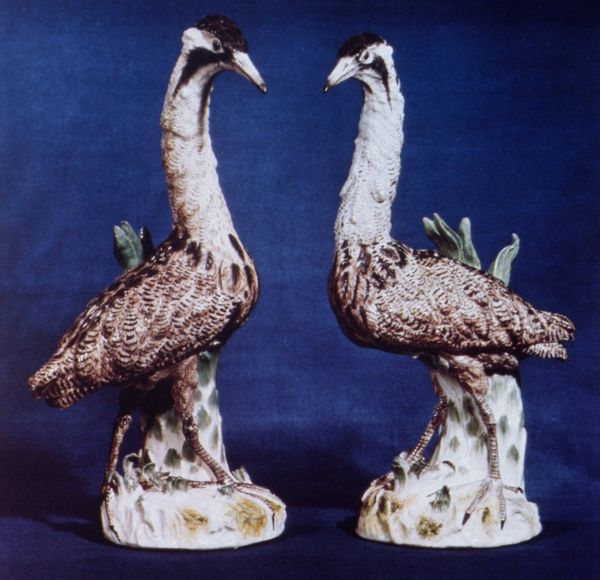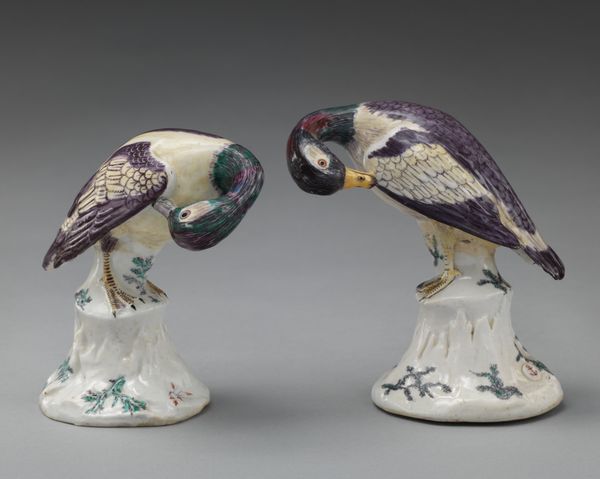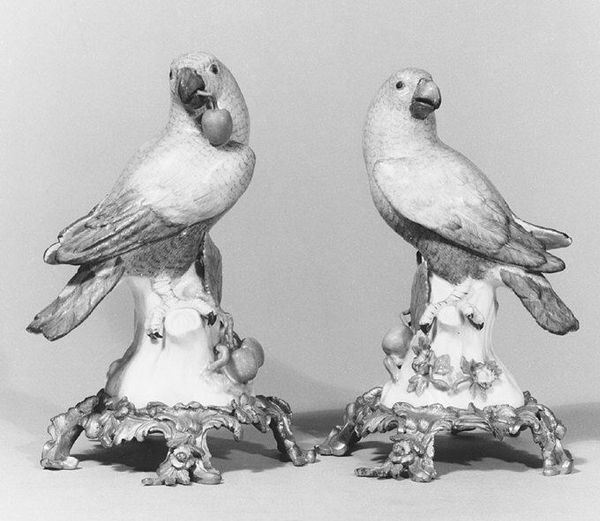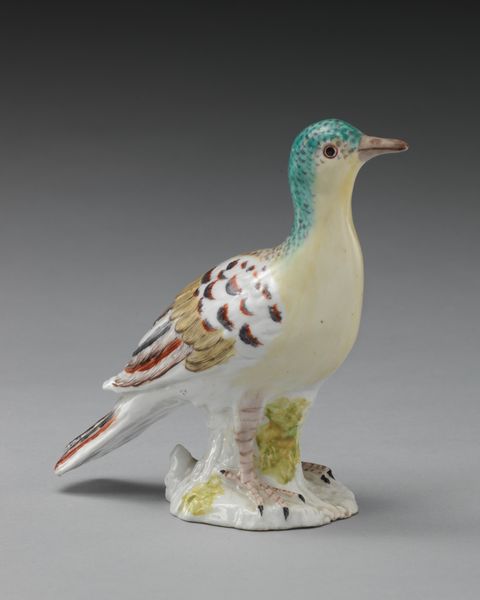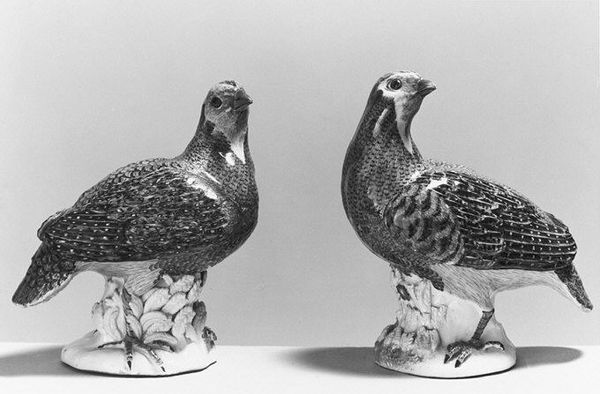
Cockatoo (one of a pair) 1760 - 1770
0:00
0:00
Dimensions: Height (each): 12 in. (30.5 cm)
Copyright: Public Domain
Editor: So, this is "Cockatoo (one of a pair)," made by Ludwigsburg Porcelain Manufactory sometime between 1760 and 1770. It's a porcelain sculpture, currently residing here at the Met. There’s a strange formality to these birds. They're perched so perfectly, almost like little statues of themselves. What strikes you when you look at them? Curator: You know, seeing these porcelain birds always tickles me pink. Imagine the sculptor, chasing the impossible dream of capturing life in cold clay! It's pure Baroque excess. The way they perched the birds upon branches overflowing with those improbable porcelain berries...it’s a complete fantasy! Editor: Fantasy is definitely the right word! Did porcelain birds like these have a purpose beyond decoration? Curator: Oh, absolutely. These weren't just pretty trinkets, darling. Think of the aristocracy showing off their wealth and worldly knowledge. Exotic birds were all the rage, but who could keep a real cockatoo still long enough for a portrait? This was the next best thing – a permanent, pristine piece of the "new world" on display in their homes. A true status symbol! Doesn’t it feel like a little porcelain lie, or maybe just an artful aspiration? Editor: An artful aspiration, I like that! So, they were less about nature and more about... power? Curator: Precisely! They embody this delightful tension: an object born of high artifice pretending to be something natural and wild. This push-and-pull makes them, for me, endlessly fascinating! Editor: That’s a perspective I never considered. Now, I see these birds in a whole new light. It's amazing how much history can be packed into something so seemingly delicate. Curator: Absolutely. Next time you spot porcelain, let your imagination take flight, just like this cockatoo – into the realm of artistic whimsy.
Comments
No comments
Be the first to comment and join the conversation on the ultimate creative platform.
